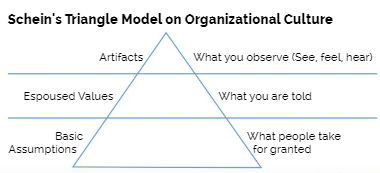Building digital-ready culture

The rapid change to digital and remote working in organizations around the world has been a great test of human spirit and resilience. Yet, over the weeks and months of meeting and engaging people through cameras and microphones, many have noted that “Things are not quite the same.” While we have replaced the formal physical meetings, the paper-intensive processes, and the auditorium town-hall meetings, many are missing the informal interactions, the social connections, the spontaneous discussions in the day-to-day digital work life. The traditional business handshake has all but disappeared from the planet and many are wondering if it will ever return!
This subtle difference between physical and virtual presence has raised questions related to innovation, social well-being, and organization culture. While most organizations have been able to sustain digital operations quite smoothly, one must recall that most have a solid foundation of pre-pandemic relationships and an expectation of cultural norms. In addition, employees with close relationships are more likely to have spontaneous phone calls or chat to share viewpoints or even just laugh. As firms now plan the future of work with an eye towards digital connections and virtual work, it will be important to build social cohesion and casual relationships in some way. If our digitally-enabled work arrangements are here for the long-term, how might we re-think the ways of sustaining and building our organization culture?
Culture plays an important role in the employee experience and can provide a strong sense of affiliation and social capital in an enterprise. As we think about the organization culture, it is helpful to turn to the work of Edgar Schein, a former professor at the MIT Sloan School of Management. Schein identified three levels of organizational culture as shown in Figure 1:

Artifacts – This includes identifiable, physical, tangible elements in an organization. Firm artifacts can include the architecture of the office, location of workplaces, the furniture, office layout, dress code, and other visible elements. Generally, these are easily identifiable by visitors to an organization and may reflect clues about what is important in the organization.
Espoused Values – This includes the company mission, vision, and shared values as a starting point. Other signals of values can be found with slogans, marketing, brand positioning, communication messages, organizational mantra, organization structures, and how work is organized.
Basic Assumptions – This includes shared, but not actively defined, beliefs regarding interactions and behaviors. These assumptions can be embedded due to the industry, company history, or office dynamics that can be hard to recognize or articulate. Often people might say, “That is how we do things around here.”
Considering this well-accepted model for organizational culture, we must consider how we address these elements in our new digitally-enabled workplaces. If we are not in a physical office, then how do we consider the artifacts or signals of culture? If we are not together in person, how do we understand and pick up the clues on values as well as the assumptions for ways of working?
When Schein researched organization culture in the 1980s, we did not have digital tools in place. As such, work was generally an in-person experience. As we now consider organization culture, perhaps it is time to re-examine and reset our ideas for shaping an organization culture in this digital era. Upon reflection, we might refresh Schein’s model to be more digitally oriented. As organizational leaders consider how to shape their future culture in a more digitally enabled enterprise, there are a few areas that emerge:
Artifacts: In addition to the traditional physical artifacts in an office environment, organizational leaders must address the digital artifacts as well. This may include:
- Digital pathways for meetings – As we move to the post-pandemic operating models, it will be critical to consider how we manage hybrid meetings to create an equitable experience and connection for everyone in a manner that is consistent with the desired culture.
- Collaboration tools – Sharing files, posting ideas, and team workspaces are not new, but relatively few groups spend the time to establish norms and expectations on how to optimize their digital working toolset.
- Informal connections – The use of chat mechanisms and other messaging services are often set up with close colleagues, but not everyone is always included. It is a good opportunity to reset usage patterns and ensure that the use reflects the desired culture.
- Anchoring mechanisms – Once it is safe to gather physically, it may be important to create in-person gatherings to serve as cultural anchors and collective experiences to reinforce social cohesion while fostering a sense of affiliation.
Espoused and posted values: In addition to the stated values and the traditional ways of working in the office, leaders must address the digital manifestation of values. This may include:
- Emphasis on unifying events – With people working in remote locations, many firms may opt to create regular physical as well as digital gatherings. Consulting firms have managed this way for decades to help solidify the culture and reinforce values.
- Equity and inclusion – While many digital interactions may level the playing field in terms of equity in some organizations, we all need to take care to evaluate work operations for unintended consequences.
- Shared learning experiences – In many organizations, shared experiences and learning events can provide unifying opportunities as well as a way to reinforce firm values and ideals.
- Purpose and Affiliation – One of the great ways to align employees to values is through a common sense of purpose. When people are proud of the brand and the brand promise, they will also feel a sense of loyalty and affiliation.
Basic assumptions: While assumptions permeate both the physical and digital worlds, the move to a hybrid or remote working mode can create new opportunities to shift assumptions. This might include areas such as:
- Trust – Building trust can take time and may be limited to people working in close proximity. With digital connections leaders can demonstrate and build trust more readily and in wider circles. This can be an important ingredient in reshaping culture.
- Transparency – Without the limitation of physical distance, digital connections and sharing can elevate levels of transparency in sharing information and ideas. While this typically is effective in trusted relationships, transparency can help reinforce cultural expectations and norms.
- Social Cohesion – Over the period of the pandemic, digital bridges have been created between workgroups and there might be new opportunities to reinforce these in the new work modes while finding ways to expand the social networks in organizations.
- Coaching – While many have delayed performance discussions and put coaching aside during the pandemic, it may be time to refresh and redefine mentoring and performance expectations. Regardless of physical or digital formats, it is important to agree on how to redefine expectations, measures, and feedback processes in our future of work modalities.
While we can manage clear processes, update our learning, perform administrative functions, and analyze data through remote virtual work, we must take care to determine how we also encourage the physical work environment to reinforce the desired culture. Innovation, collaboration, and informal connections that create spontaneous ideas and breakthroughs are important cultural elements that are hard to replicate in our digital world. As for me, I am ready to trade some of my screen time for a few old-fashioned business handshakes in our physical world and experience the culture of others.













